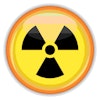
Whether a radiologist's speed interpreting studies relates to accuracy is up for debate, but regulating workloads at present with little scientific evidence available could do more harm than good, according to articles published June 14 in Radiology.
The workload of radiologists in the United States has seen relentless growth in recent years, and so-called "reckless reading lawsuits" are on the rise. Some experts have suggested regulating workloads. But not so fast, says a group at SUNY Downstate Medical Center in Brooklyn, NY.
"What was true more than 20 years ago remains true today: It is unknown how many examinations or images radiologists can review in any period while maintaining accuracy," wrote corresponding author Dr. Stephen Waite, and colleagues.
In their review, the authors cited a malpractice case from 2020 that alleged a subdural hematoma in a 64-year-old man was missed because the radiologist spent a total of six minutes and 27 seconds reading a CT exam of the head and cervical spine (as determined by subpoenaed keystroke data).
The plaintiff's attorney argued that the average viewing time of each image was under a second per image, and therefore the radiologist was lax (i.e., not sufficiently careful), thus engendering a larger settlement. However, the available math doesn't support the logic of this argument, the authors suggest.
In a 2019 study, researchers found that private practice radiologists generate between 13,000 and 15,000 relative value units (RVUs) per year. Given 261 working (nonweekend) days in 2021, and assuming eight weeks of vacation, radiologists would have to generate 63 RVUs per day to achieve 14,000 RVUs per year.
Assuming that a CT scan of the abdomen and pelvis generates 1.82 RVUs, this amounts to approximately 34 scans per day, the authors wrote.
In another study, researchers reported that the average CT exam contains 679 images. By using this figure for the average number of images per exam and a seven-hour workday (assuming a standard eight-hour workday including a one-hour lunch break), this leaves 1.1 seconds for radiologists to look at each image.
Still, this is unrealistic, since it presumes no breaks, interruptions, consultations, or conferences, the authors wrote.
A 2014 study found that on-call radiologists receive an average of 72 phone calls during a typical 12-hour overnight shift, with an average total phone time of 108 minutes. Thus, allowing for 90 minutes of interruptions, breaks, consultations, and conferences, this leaves radiologists with less than one second (0.86 sec) to read each image.
"The available evidence indicates that reading an image in a cross-sectional study in less than a second on average is the current standard of care in radiology, so implying that such behavior is negligent fails logic," the authors wrote.
They noted that the American College of Radiology does not currently have a practice parameter that addresses minimum interpretation speed per image, which is a warranted omission given the current state of knowledge.
"Any standard or practice parameter in this regard would not be scientifically justified," they wrote.
Implementing artificial intelligence (AI) may offer a solution to the perceived conundrum, the authors suggested. AI based on machine learning and paired with computer-vision technology has the potential to serve as a second reader in real-time.
AI and machine-learning algorithms that are either in a development phase or currently available may be sufficiently accurate at detecting abnormalities to augment human radiologists, thereby providing a safety net that improves accuracy.
Nonetheless, future studies are needed, and the issue of assessing radiologists' productivity is not simple, the authors wrote.
For instance, does a radiologist work at the same speed and level of accuracy late on a Friday afternoon and early on a Monday morning, after a weekend off or after coming back from a week of vacation? These types of questions will need to be answered.
So far, studies suggest regulating workloads does not result in decreased medical errors, and may even create additional unforeseen problems, such as an unacceptable backlog of unread images, the researchers wrote.
Moreover, unprincipled regulations can worsen performance for radiologists who perform at their peak while near the margins of normal performance parameters, resulting in inadvertent exacerbation of medical error and compromised patient care, they added.
"While we agree that regulation may ultimately be required, arbitrary regulations that have no scientific basis are potentially more harmful than not regulating at all," Waite and colleagues concluded.



















